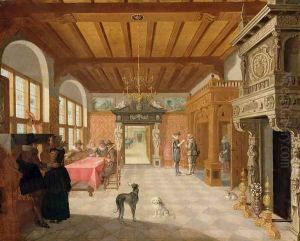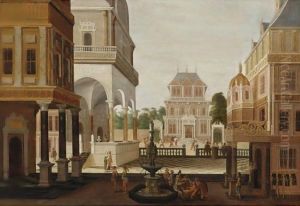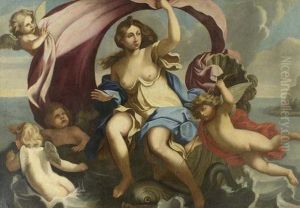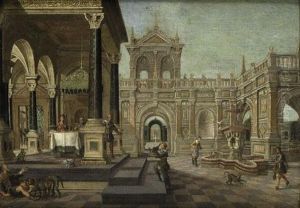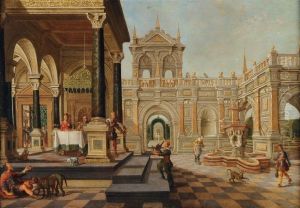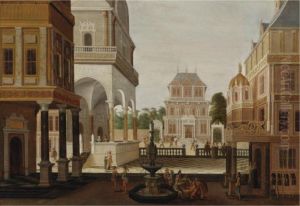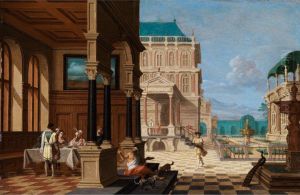Nicolaes de Gyselaer Paintings
Nicolaes de Gyselaer, a relatively obscure figure in the annals of art history, was a Dutch artist born in 1621. Not as widely recognized as his contemporaries in the Dutch Golden Age—a period marked by remarkable wealth, cultural achievement, and prolific output in the arts—de Gyselaer nonetheless contributed to the era's rich tapestry of visual culture. His works and life story offer a glimpse into the less documented corners of 17th-century Dutch art.
De Gyselaer's artistic journey unfolded in an era dominated by figures like Rembrandt, Vermeer, and Hals, and while he did not achieve their level of fame, his work displayed the characteristic attention to detail and the interplay of light and shadow that Dutch art is renowned for. Information about his training and early career is scant, but it is known that he worked primarily as a genre painter, creating scenes of everyday life that were popular among the middle-class patrons of the time. His paintings often depicted the interiors of Dutch homes, markets, and streets, capturing the vibrancy and dynamism of 17th-century Netherlands.
Despite the lack of extensive records on his life, de Gyselaer's surviving works suggest that he was adept at portraying the textures and materials of his subjects, from the gleam of copper pots to the softness of woolen garments. This skill indicates that he was well-trained, possibly in one of the many guilds that nurtured talent and regulated the art market in Dutch cities.
After his death in 1681, Nicolaes de Gyselaer's name gradually faded from the forefront of art historical scholarship. Unlike his more celebrated peers, his legacy did not see a resurgence in interest with the later revival of Dutch Golden Age art in the 19th and 20th centuries. Today, his paintings are primarily of interest to specialists and collectors focused on the period. Nevertheless, his work remains a testament to the depth and diversity of talent that flourished in 17th-century Netherlands, offering valuable insights into the era's social and cultural life.
